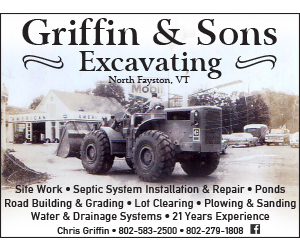Residents riding school buses and other potential solutions
Education may not seem like a business, but “it’s a critical part of our economic fabric,” Mad River Valley Planning District (MRVPD) member Jared Cadwell said on Tuesday, September 22. “Parents have deliberately made the choice to live here so they can send their kids to our schools.”
Last week, teachers, administrators and others working in local educational institutions—both public and private—in The Valley came together in the Moretown Elementary School cafeteria for an Economic Vitality workshop. The workshop was the last in a series of nine that the MRVPD put on this summer as a follow-up to an economic study of the region that was completed in 2014.
At the start of the workshop, attendees identified the strengths of their sector and of The Valley in general, which included good schools, great teachers and administrators, a proud, community-minded population with a commitment to volunteerism and a naturally beautiful landscape that “isn’t overdeveloped,” one school administrator said.
With the implementation of Act 46, which will consolidate school districts across the state by 2019, the future of public education in The Valley is unknown, workshop attendees agreed. State-mandated consolidation “can be divisive rather than bringing people together,” an education professional said.
Right now, workshop attendees said they appreciate the close-knit nature of The Valley community. “Our smallness is in many ways a strength,” one school administrator said. Unfortunately, however, the region’s low population density has created challenges for transportation within the education sector.
A lot of the times, decisions in The Valley’s public schools are based on “what’s best for the bus companies rather than what’s best for the kids,” one teacher said, explaining that schools spend large amounts of money on transportation that they could be spending elsewhere.
Outside of the public school system, educational institutions like Yestermorrow Design/Build School in Waitsfield also face transportation challenges in the region, as they attract students from all over the country who have a hard time getting to The Valley and a hard time getting around once they’re here.
As a solution, workshop attendees wondered if there is a way to open up school buses to the general public. “In inner city schools, students take public transportation all the time,” one school administrator said.
“The school bus passes right by my house and my office,” one workshop attendee said, “but I can’t take it.”
Right now, the public is not allowed to ride school buses, “but that could change,” one school administrator said, wondering if there was a way to make it safe and convenient for both parties. “What if there were a doorway for the community and a doorway for students?” he asked.
Last Tuesday, workshop attendees also talked about the possibility of creating an electric vehicle (EV) sharing program that could be based out of a central location in The Valley, such as Evergreen Place Senior Center in Waitsfield. With that location, it may be possible to apply for grants that cater to health and aging to pay for an EV charging station, one attendee said.
Other challenges to education in The Valley are a lack of alternative opportunities. “Are there enough of them?” one teacher asked.
In strategizing a solution to increase alternative opportunities in education, workshop attendees agreed that there isn’t enough data about existing opportunities and that that information should be collected and made available to the public.
Teachers and administrators expressed excitement about new changes that are being implemented in schools that allow for multiple paths for individual students to meet state standards and agreed that education professionals need to refocus conversations to include not just test scores but other extracurricular learning opportunities such as mentorships.
Like almost all of the previous Economic Vitality workshops—regardless of the sector—workshop attendees also identified a lack of affordable housing as one of their main challenges.
As a solution, one administrator proposed that The Valley change its zoning laws to allow for tiny houses on properties, encourage mixed-residential use buildings in downtown areas like Irasville and create property tax incentives for people who rent out rooms in their homes.
Economic Vitality workshop – farms and food producers
Finding land, keeping employees and other challenges for farmers
In The Valley, agriculture accounts for 8 percent of employment and 12 percent of gross revenue, but the full impact of the sector isn’t so easily quantified, Mad River Valley Planning District (MRVPD) director Joshua Schwartz said at last week’s Economic Vitality workshop for farmers and food producers.
Agriculture “is our history. It’s our legacy,” Schwartz said, speaking for the local community. In The Valley, “quality of life is a huge driver,” he said, “and the role that agriculture plays in that is really quite substantial.”
Unfortunately, the sector is not without its challenges and last Thursday, September 17, about two dozen of The Valley’s farmers and food producers came together at The Inn at Round Barn Farm in Waitsfield to identify those challenges and strategize solutions. The Economic Vitality workshop was the eighth in a series of nine that will take place this summer. The series is presented by the MRVPD and the Mad River Valley Chamber of Commerce following an economic study of the region that was completed in 2014.
According to workshop attendees, one of the biggest strengths of The Valley’s agricultural sector is its reputation. The region “has great tillable soil” and is known for its “strong food infrastructure,” business owners said. There’s a lot of diversity and value-added production on Valley farms, workshop attendees said, and those who work in the sector maintain strong relationships with their customers, restaurants and wholesalers.
In spite of those strengths, farmers and food producers said that the biggest challenges they face in The Valley are finding and accessing land and paying and housing employees.
HIRE A COORDINATOR?
“Are there people who are willing to do the hard work?” one business owner said of finding people to work on his farm. So far, Northeast Organic Farming Association of Vermont (NOFA-VT) programs “have been helpful for putting interns on farms,” he said. “But not all of us have the time to teach ... and then they leave and take their skills with them.”
According to workshop attendees, Valley farms and food producers could benefit from a central website, “sort of like a Front Porch Forum concept,” one business owner said of the online networking forum, “where everybody knows who needs labor and who’s got labor,” he said.
Taking that concept one step further, “What if we had a coordinator to do all of this for us?” one workshop attendee asked, explaining that Valley farms and food producers could all chip in and hire someone to help them with hiring.
That coordinator could also help workers find places to live, workshop attendees said, explaining that the lack of affordable housing in The Valley reduces their potential employment pool.
Other potential solutions to The Valley’s high rental rates could include taking advantage of “nontraditional options” such as tiny houses and yurts, one business owner suggested, and creating incentives for property owners to build accessory apartments on their homes.
CREATING MORE THAN ‘CURRENT-USE’
There’s a lot of opportunity to further develop The Valley’s agricultural sector, but “basically land is just too expensive,” one workshop attendee said. Vermont’s current-use program allows property owners to pay lower tax rates if they don’t develop their land, “but it doesn’t put it in production,” one workshop attendee said. “It might put a llama on it.”
Part of the solution to too-expensive land lies in educating the local population about leasing arrangements, workshop attendees agreed. On the property owners’ side, “People don’t always know how fabulous their land is and what it could be used for,” one business owner said.
Likewise, on the farmers’ side, “If you don’t own your land, what are the options?” one business owner asked, “because I don’t know.”
“We need a database” that keeps track of suitable farmland in the area so that business owners can propose leasing arrangements, one workshop attendee said. “It could be called the Valley Land Link.”
While leasing is a temporary solution, “there are no guarantees,” one business owner said.
In order to sustain larger, more long-term operations, “We have to make land affordable for purchase,” one workshop attendee said. “If we want farming to be important to this community we have to implement land use policies that make it important.”







